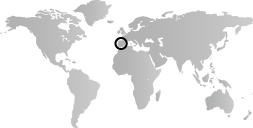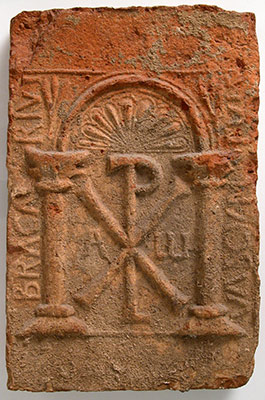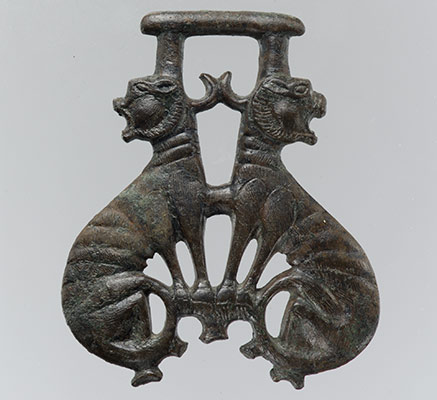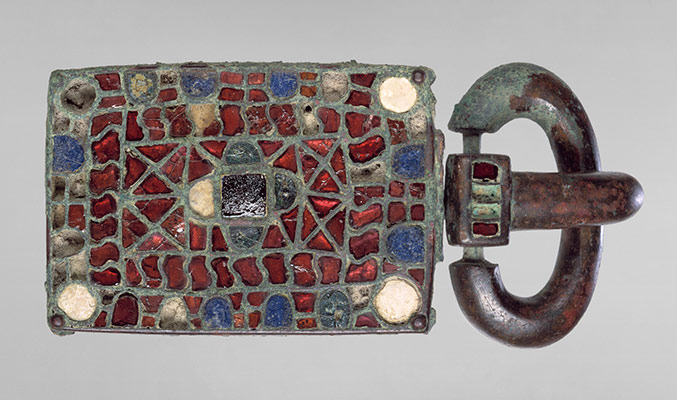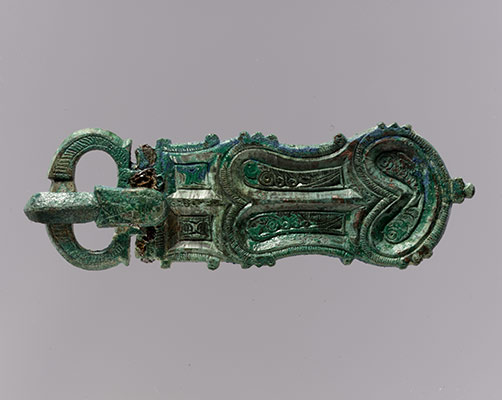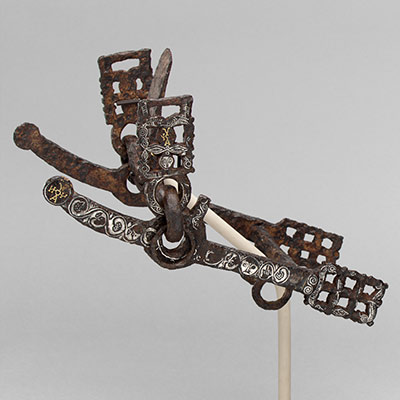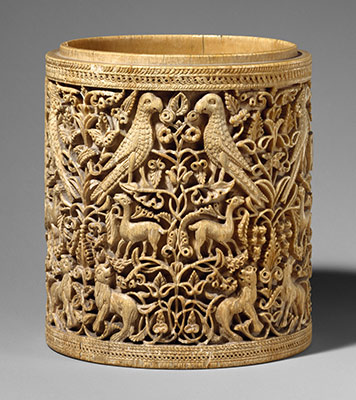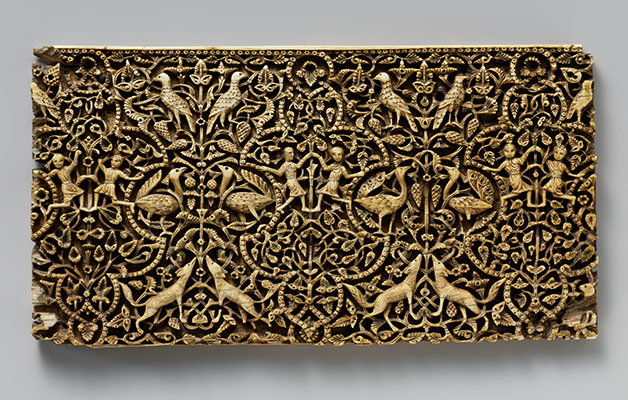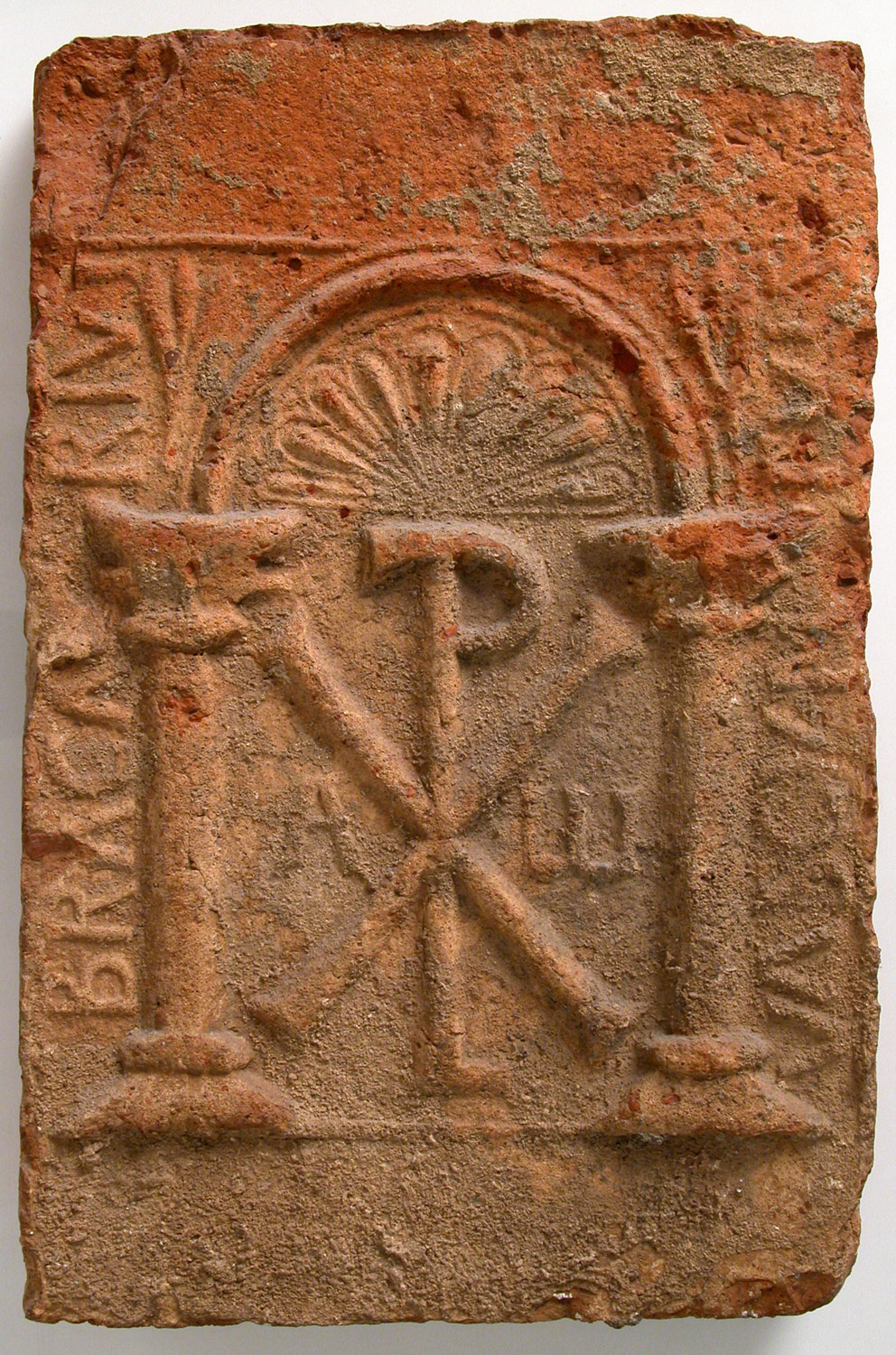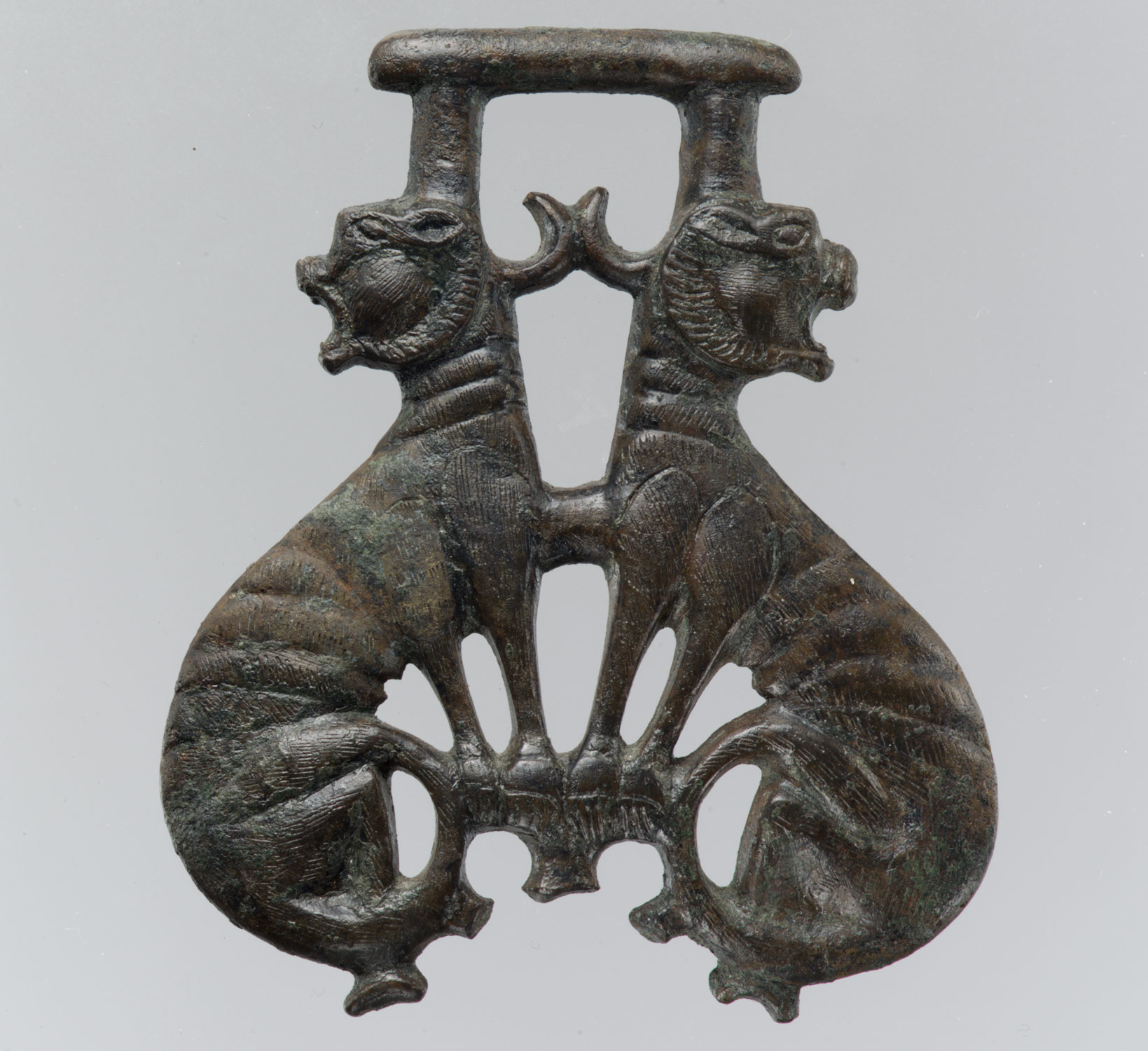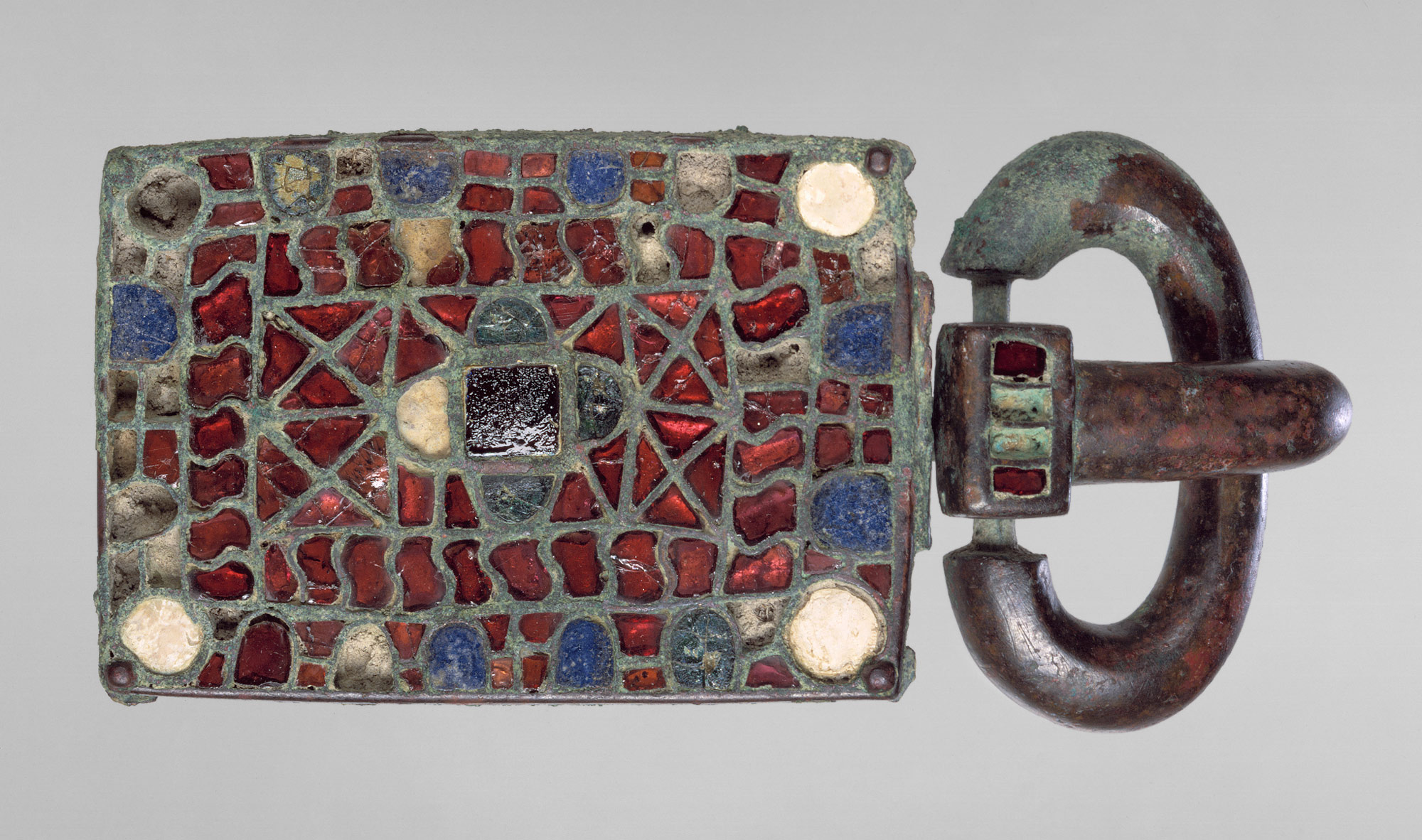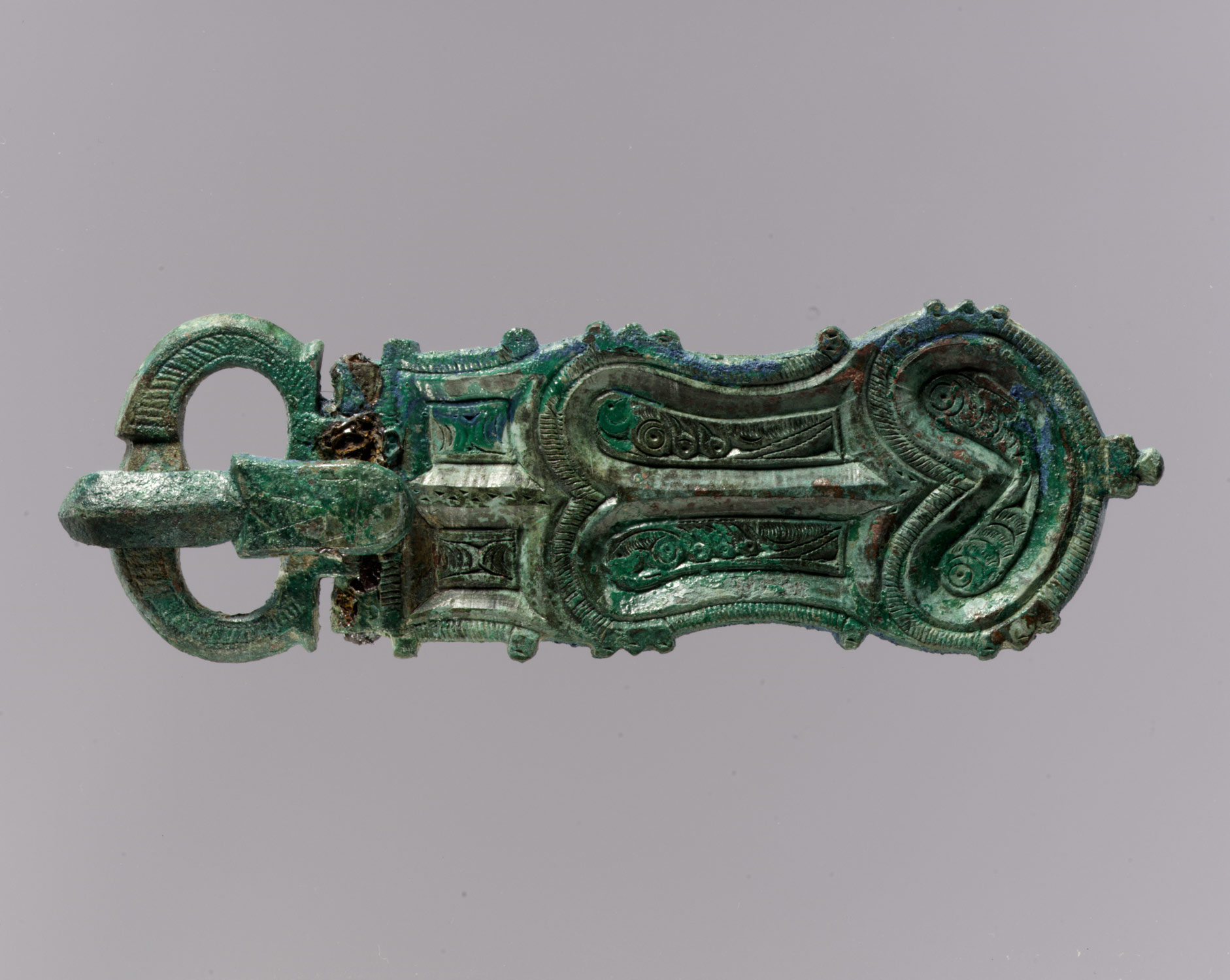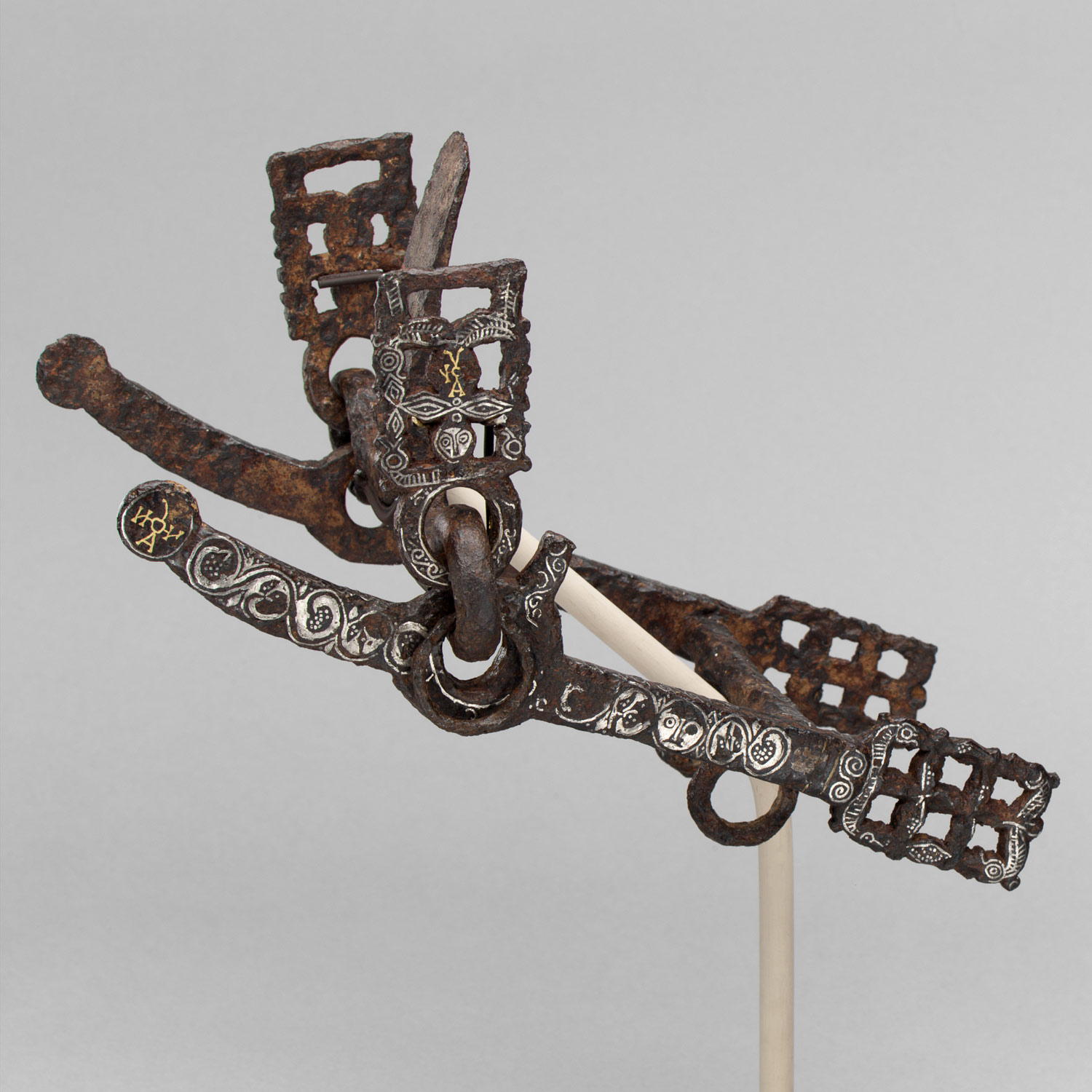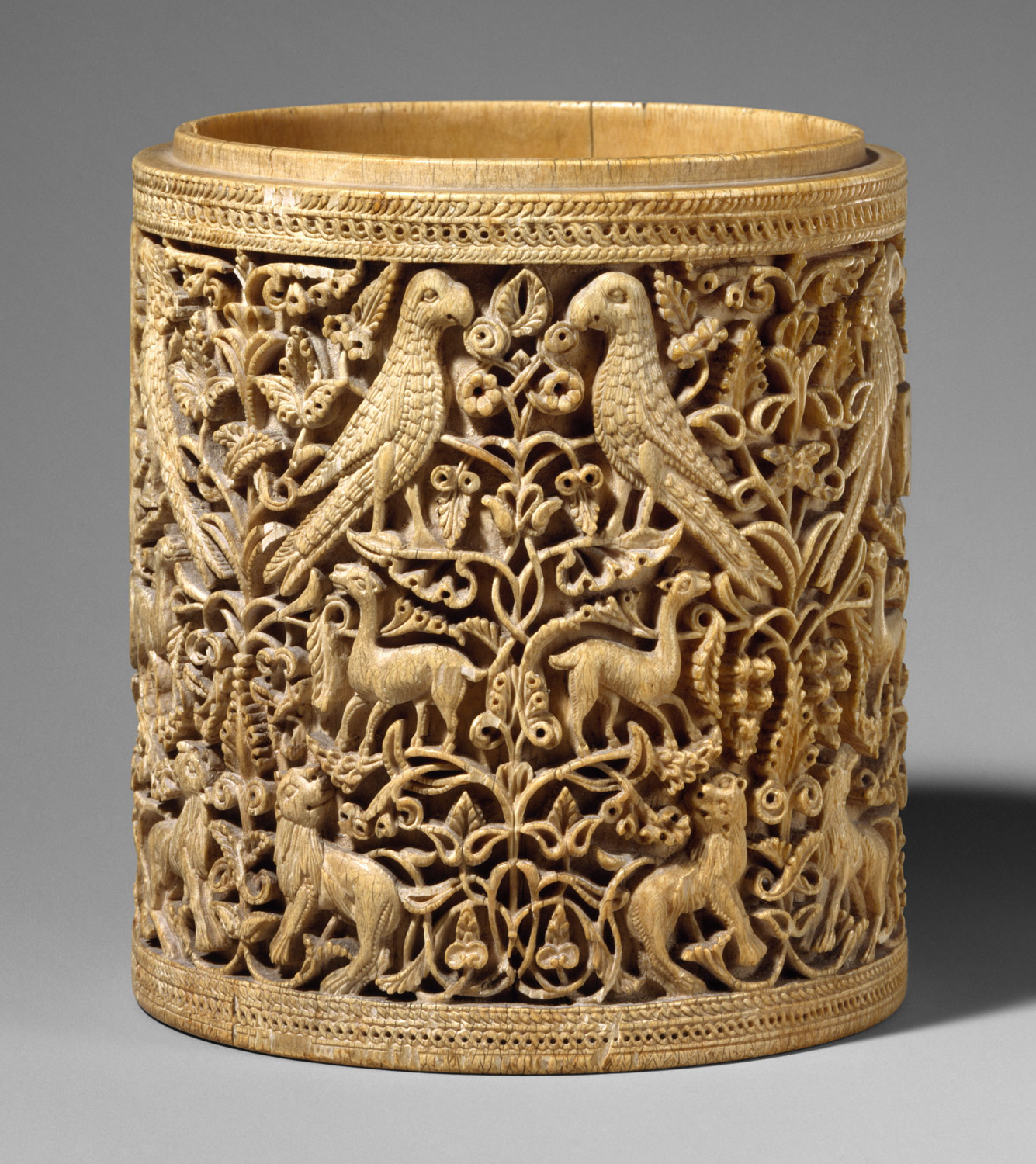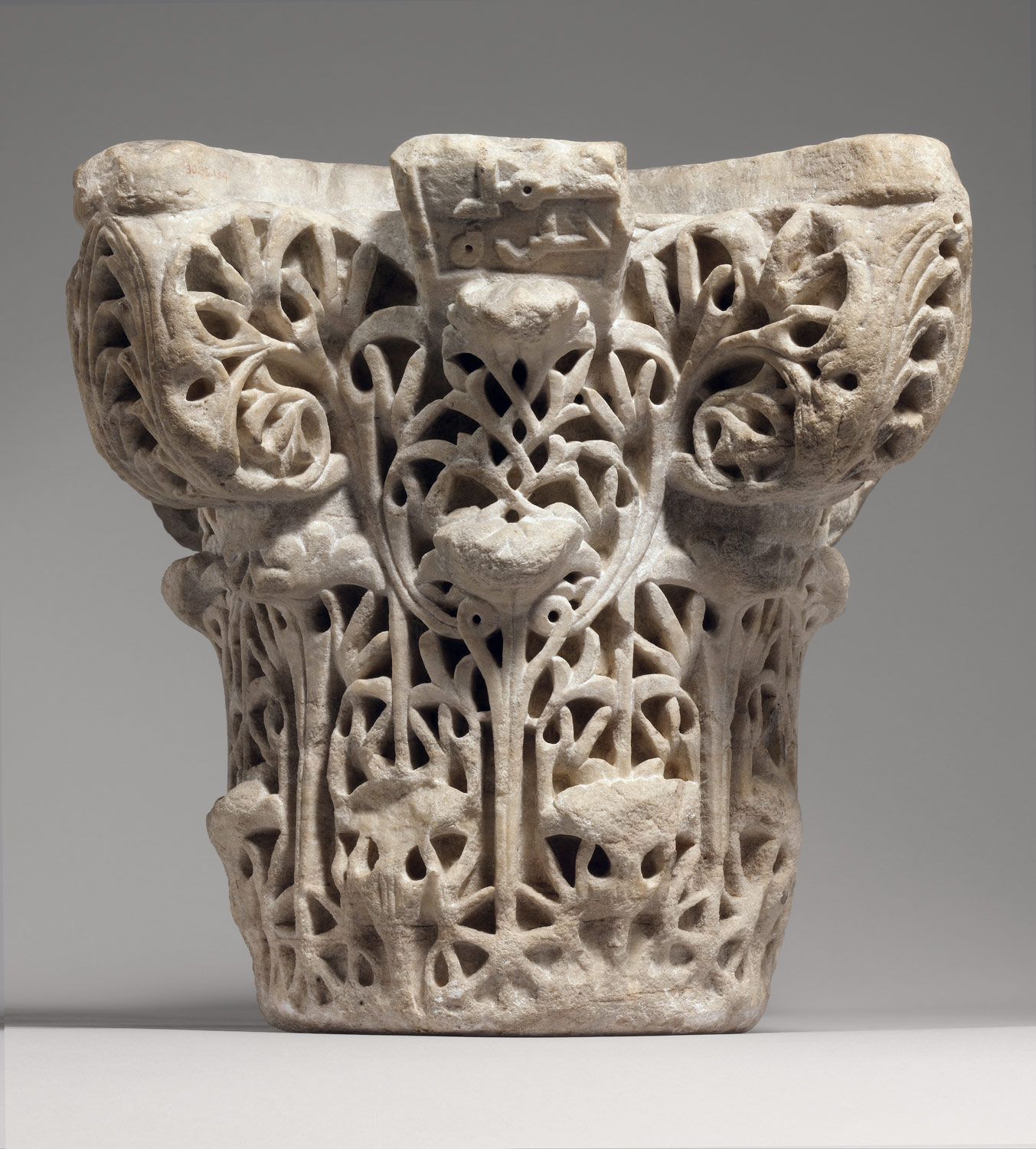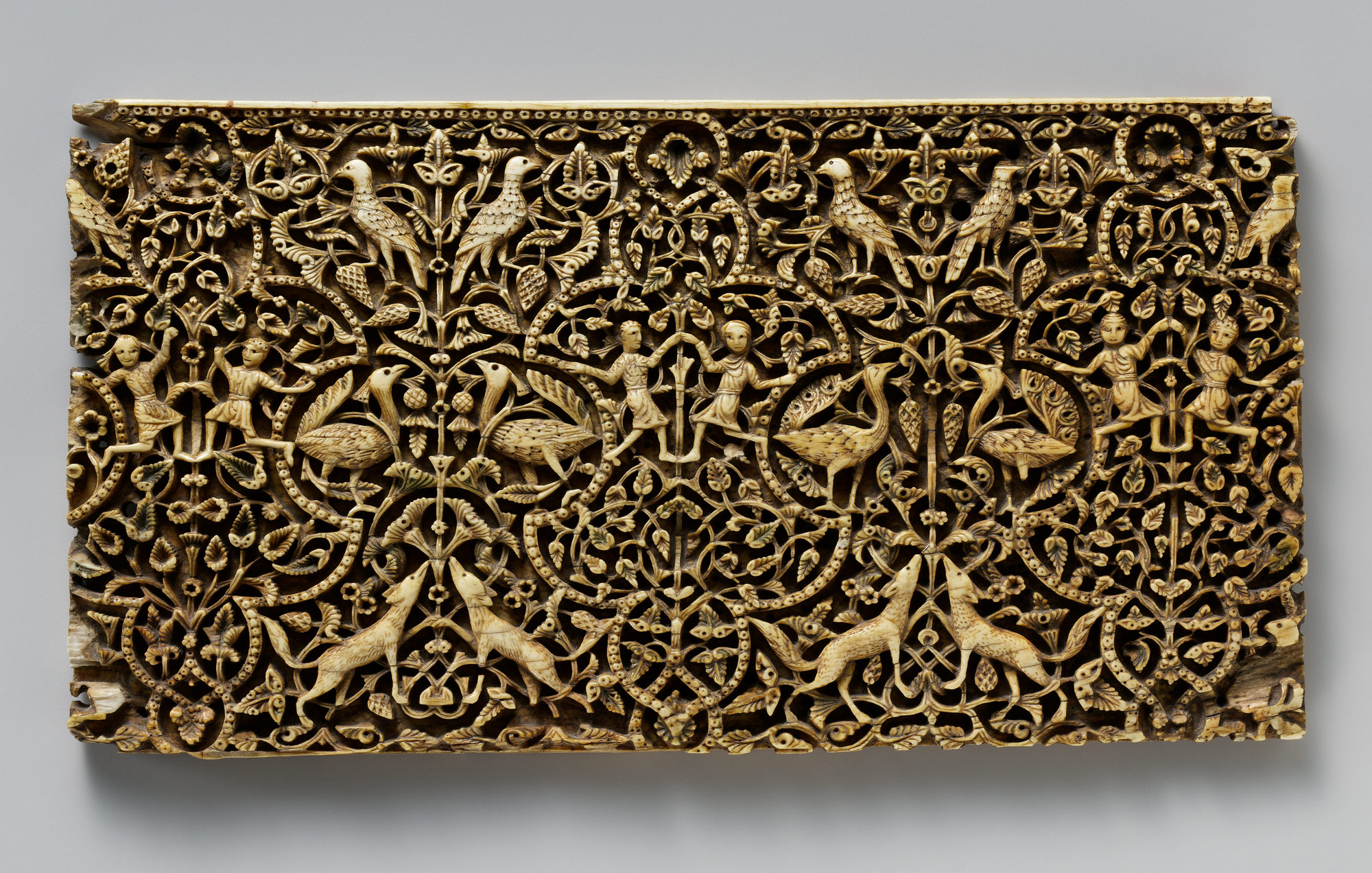From 500 to 1000 A.D., the Iberian Peninsula witnesses different waves of conquests by the Visigothic, Byzantine, and Arab armies. Christian rule under the Byzantines and Visigoths in the first half of the period comes to an end with the introduction of Islam in the eighth century by Arab armies. Under Islamic Umayyad rule, there is remarkable cross-cultural exchange between Christian, Jewish, and Muslim populations. Eastern Mediterranean cultural impulses complement local developments and help establish a rich and diverse artistic tradition. In the tenth century, the style set in Córdoba, one of the great cultural centers of Europe, is emulated throughout the region and beyond.
Iberian Peninsula, 500–1000 A.D.
Timeline
500 A.D.
625 A.D.
NORTH
SOUTH
625 A.D.
750 A.D.
NORTH
SOUTH
750 A.D.
875 A.D.
NORTH
SOUTH
875 A.D.
1000 A.D.
NORTH
SOUTH
Overview
Key Events
-
The Byzantines reconquer the southeast corner of the Iberian Peninsula as part of Emperor Justinian’s efforts to recover the former Roman possessions in the West.
-
567
The Visigothic king Leovigild chooses the Roman town of Toletum (modern Toledo) in the center of the peninsula for his capital and permits his people to intermarry with the local Hispano-Roman population. The art of early Visigothic Spain consists largely of intricately fashioned buckles, brooches, and other objects of personal adornment that incorporate motifs and styles adapted from Germanic, Byzantine, and Hispano-Roman art.
-
584
The Visigoths retake the important city of Córdoba from the Byzantines.
-
589
At the Third Council of Toledo, the Visigoths, under King Reccared (r. 586–601), convert from Arian Christianity to Orthodox (Catholic) Christianity and achieve unification of the Iberian Peninsula. Reccared’s rule initiates an age of stability and cosmopolitanism. Visigoth goldsmiths make splendid liturgical objects, as well as objects of personal adornment. Throughout the seventh century, the Visigoths build churches of well-cut masonry, come with horseshoe-shaped arches and historiated capitals, that is, capitals carved with narrative scenes. The small churches that still exist at Baños and Quintanilla de las Viñas suggest the style of the grander buildings that once stood in Toledo.
-
600–636
Isidore is bishop of Sevilla. A trusted advisor to the Visigothic kings, he consolidates the power of the Catholic church in Spain and writes several learned works. His Etymologies, which presents an encyclopedic range of knowledge in a series of explanations for the origins of words, is consulted by scholars throughout the Middle Ages.
-
711–718
An army of Arabs and Berbers, unified under the aegis of the Islamic Umayyad caliphate in Damascus, lands on the Iberian Peninsula and, through diplomacy and warfare, brings the entire peninsula—except for Galicia and Asturias in the far north—under Islamic control. The Visigothic leadership is forced out of Toledo, but a large Christian population remains under Muslim rule. In 718, a Christian kingdom is formed in the Asturian region, the northern part of the peninsula beyond the Duero River. The new Muslim territories, called al-Andalus, are administered by a provincial government centered in Córdoba.
-
756–929
When the Umayyad caliphate of Damascus is overthrown by the ‘Abbasids in 750, the last surviving member of the dynasty flees to Spain and establishes himself as Emir ‘Abd al-Rahman I (r. 756–88). He makes Córdoba his capital and unifies al-Andalus under his rule with a firm hand, while establishing diplomatic ties with the northern Christian kingdoms, North Africa, and the Byzantine empire and maintaining cultural contact with the ‘Abbasids in Baghdad. The construction of the Great Mosque of Córdoba (785) under his patronage is the crowning achievement of this formative period of Hispano-Islamic art and architecture.
-
776–782
Beatus of Lièbana writes a twelve-volume commentary on the Apocalypse, the last book of the New Testament. In the tenth century, the text becomes popular among Mozarabic book illustrators (see below).
-
777
The invasion of Spain by Charlemagne is checked by the Muslim defense of Saragossa. His rear guard is annihilated by the Basques at Roncesvalles in 778, inspiring the later Song of Roland (although the poem attributes the attack to the Muslims). Charlemagne’s troops go on to capture Barcelona in 801 and to occupy Catalonia. The counts of Catalonia nominally serve as vassals to the Carolingian kings and, even after asserting their independence at the end of the ninth and tenth centuries, still maintain political and cultural ties with the kingdom of France. The Basques too retain a degree of autonomy and their territories are largely incorporated into the kingdom of Navarre.
-
ca. 900
The Christian kings of the Asturias invite Christians living under Muslim rule to settle the frontier between the two kingdoms. The so-called Mozarabic Christians, a group that developed a distinctive liturgy, respond to the call in large numbers, and several monastic communities make the move. A flurry of church-building takes place to accommodate the settlers, and Mozarabic monks copy texts and illustrate them in a style distinguished by bright colors, vigorous abstraction, and a rejection of illusionistic space.
-
ca. 900–1100
The tolerance for non-Muslims under the Umayyad caliphs and later rulers creates ideal conditions for harmonious coexistence among Christians, Jews, and Muslims. The tenth and eleventh centuries are especially significant for Iberian Jewish history and are often regarded as a golden age of literature, philosophy, and science.
-
910
King García I moves the capital of Asturias from Oviedo to León. Upon his death, his brother Ordoño II erects there a palace and cathedral. Though the kingdom is essentially a continuation of Asturias, it becomes known as the kingdom of León.
-
912–961
Under the rule of ‘Abd al-Rahman III, the first Spanish Umayyad emir to declare himself caliph (929), Córdoba becomes perhaps the greatest intellectual center of Europe, with celebrated libraries and schools. ‘Abd al-Rahman III’s palace city at Madinat al-Zahra’ sets the standard for artistic taste in the caliphate and Hispano-Umayyad art reaches its apogee.
-
929–1031
Under the Umayyad caliphate, eastern Mediterranean cultural impulses influenced by the Syrian Umayyads, ‘Abbasids, and Fatimids coexist with a strong indigenous artistic component. Hispano-Umayyad art continues to flourish under ‘Abd al-Rahman III’s son al-Hakam II (r. 961–76) and the regency of the powerful ‘Amirids, particularly al-Mansur (978–1002), chamberlain to the nominal ruler, child-prince Hisham II (r. 976–1013 with interruption). Al-Hakam II’s addition to the Great Mosque of Córdoba marks the incorporation of a palatial level of luxury and hierarchy in this religious monument.
Citation
Related
Map
